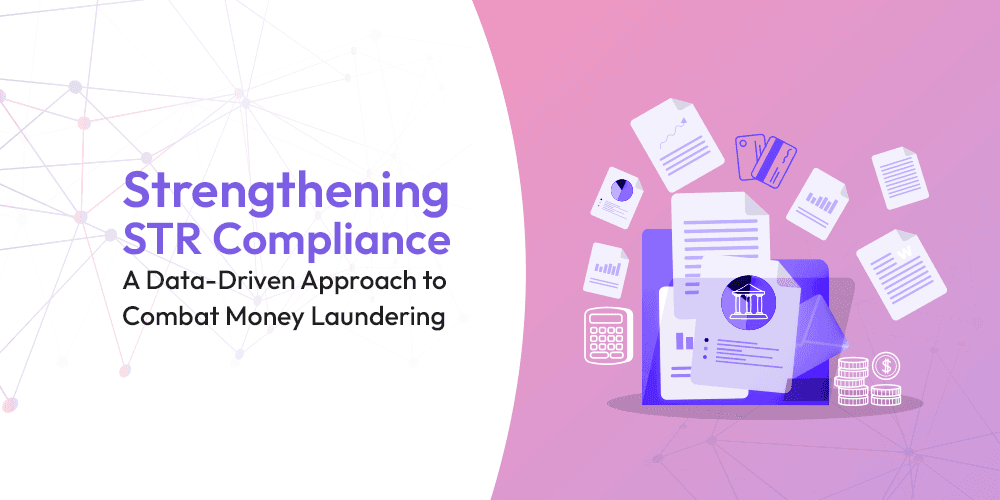
Strengthening STR Compliance: A Data-Driven Approach to Combat Money Laundering
RaptorX.ai
Saturday, March 29, 2025
Money laundering remains one of the most significant threats to financial integrity, with criminals employing increasingly sophisticated techniques such as layering, smurfing, and offshore structuring. Regulatory bodies worldwide, including the Reserve Bank of India (RBI) and the Financial Intelligence Unit of India (FIU-IND), have established stringent mandates to ensure that financial institutions detect, report, and mitigate money laundering risks. At the core of this compliance framework is Suspicious Transaction Reporting (STR), a critical mechanism for identifying illicit financial activities.
The Strategic Importance of STR Compliance
Under the Prevention of Money Laundering Act (PMLA), 2002, and the updated RBI Master Direction on KYC (Nov 2024), financial institutions must adhere to rigorous reporting and record-keeping requirements. These include:
- Identifying and flagging unusual transaction patterns that may indicate money laundering, as outlined by FATF.
- Filing STRs with FIU-IND within 7 working days upon establishing suspicion, ensuring compliance with regulatory deadlines.
- Maintaining comprehensive records of flagged transactions, including supporting evidence and justifications, to withstand regulatory scrutiny.
- Retaining transaction data for a minimum of five years to facilitate audits and historical trend analysis.
- Ensuring that compliance officers can provide clear, defensible justifications for every STR submitted.
Failure to meet these obligations can result in severe financial penalties, reputational damage, and heightened scrutiny from regulatory bodies.
Challenges in Traditional STR Compliance
Many financial institutions still rely on rule-based transaction monitoring systems, which present significant limitations:
- High False Positives: Traditional systems often generate excessive alerts, with false positive rates reaching 70-80%, leading to operational inefficiencies.
- Inability to Detect Emerging Threats: Criminals continuously evolve their laundering techniques, rendering static rule-based models ineffective.
- Manual Processing Delays: STR filing requires complex steps, including transaction clustering, rationale documentation, and audit trail maintenance, leading to compliance risks.
- Data Overload: The growing volume of financial transactions makes prioritizing and effectively investigating high-risk alerts challenging.
The Future of STR Compliance: Leveraging Advanced AI Solutions
To address these challenges, financial institutions must shift toward AI-driven compliance solutions that enhance risk detection and reporting efficiency. Advanced machine learning models can analyze transaction patterns in real time, reducing false positives and enabling proactive risk mitigation.
Key advancements include:
- Real-Time Anomaly Detection: AI models capable of identifying suspicious transactions without predefined rules, improving adaptability to evolving laundering tactics.
- Automated STR Generation: Reducing STR processing time from days to hours through automated clustering, rationale generation, and pattern analysis.
- Explainable AI Insights: Ensuring transparency with graph-based reasoning and structured reporting, making every STR defensible to regulators.
- Operational Efficiency: Cutting unnecessary alerts, allowing compliance teams to focus resources on high-risk cases while ensuring full alignment with RBI, FIU-IND, and PMLA directives.
- Seamless Integration: Compatibility with core banking systems and AML platforms streamlines compliance operations.
Redefining Compliance in a Digital-First Era
Institutions must embrace intelligent automation to enhance compliance efficiency as financial regulations become more stringent. AI-driven solutions not only streamline STR reporting but also provide a proactive defense against financial crime. By integrating advanced compliance frameworks, financial institutions can reduce regulatory exposure, improve fraud detection, and ensure a more resilient financial ecosystem.
STR compliance is no longer just a regulatory requirement—it is a strategic imperative for financial institutions to safeguard the integrity of the financial system while optimizing operational efficiency.

